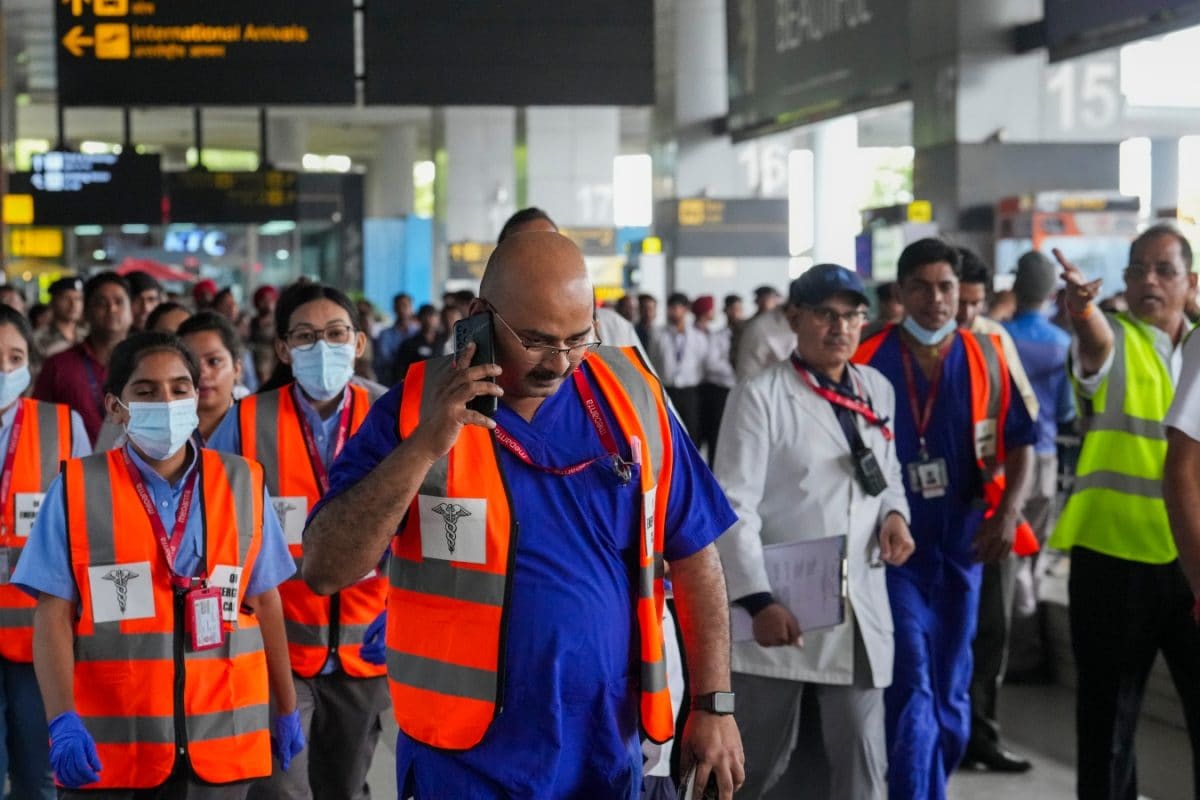

Across India, a series of civil defence mock drills, characterized by the wailing of sirens, strategic blackouts, and simulated evacuations, were conducted on Wednesday, May 7, 2025. These drills, codenamed "Operation Abhyas" in some regions, were implemented across 244 districts identified as "civil defence districts" due to their sensitivity and strategic importance. This nationwide exercise follows heightened tensions between India and Pakistan, particularly after India's retaliatory strike, "Operation Sindoor," and the recent terror attack in Pahalgam, Jammu and Kashmir.
The mock drills simulated various hostile scenarios, including incoming air raids, urban fire emergencies, and terrorist attacks. The exercises tested the effectiveness of air raid warning systems, blackout procedures, search and rescue operations, casualty evacuation protocols, and the setup of temporary hospitals. In several cities, including Delhi, Mumbai, and Lucknow, residents experienced temporary blackouts as lights were switched off to simulate wartime conditions.
In Delhi, mock drills were carried out at 55 locations, including key areas like Khan Market, Chandni Chowk, and Indira Gandhi International Airport. The Delhi Fire Service and the NDRF (National Disaster Response Force) initiated these drills, testing response systems such as air-raid warnings and firefighting capabilities. Similarly, Mumbai witnessed drills in 60 areas, with air raid sirens activated at 4 pm, followed by five-minute blackouts to assess the city's crisis response. Kolkata saw evacuation drills in private schools to evaluate student and institutional preparedness.
The mock drills involved a wide range of participants, including civil defence volunteers, NCC (National Cadet Corps) cadets, home guards, students, government employees, healthcare staff, and security forces. Coordination among various agencies, such as fire services, health departments, disaster management authorities, and police, was also assessed.
The Ministry of Home Affairs (MHA) directed all states and union territories to conduct these drills in light of "new and complex threats". The exercises aimed to evaluate the readiness of emergency response systems and enhance coordination among various agencies in the event of a crisis. Communication lines with the Indian Air Force were also tested via hotline and radio systems to ensure seamless coordination during potential attacks.
These civil defence drills are especially significant, with some reports suggesting that such large-scale exercises have not been conducted in over five decades. The drills serve to remind citizens of the importance of preparedness and the measures to take during emergencies. In Uttar Pradesh, a high alert was declared, and mock drills were conducted at malls, metro stations, and schools to assess emergency preparedness. Chief Minister Yogi Adityanath personally reviewed the arrangements for a mock drill simulating wartime preparations in Lucknow.
Blackout exercises were a key component of the drills, with residents requested to switch off lights in their homes and avoid using phones to keep communication lines free. The NDMC area in Delhi, encompassing India Gate, Connaught Place, and Lutyens' Delhi, observed a scheduled blackout. In Bareilly, a district-wide blackout was implemented for ten minutes, with residents urged to turn off all lights and avoid using electronic devices.
These nationwide civil defence mock drills reflect India's commitment to strengthening its emergency response mechanisms and ensuring the safety and security of its citizens in the face of evolving threats. By simulating real-world scenarios and actively involving various stakeholders, the exercises aim to enhance preparedness and coordination at all levels of governance and society.